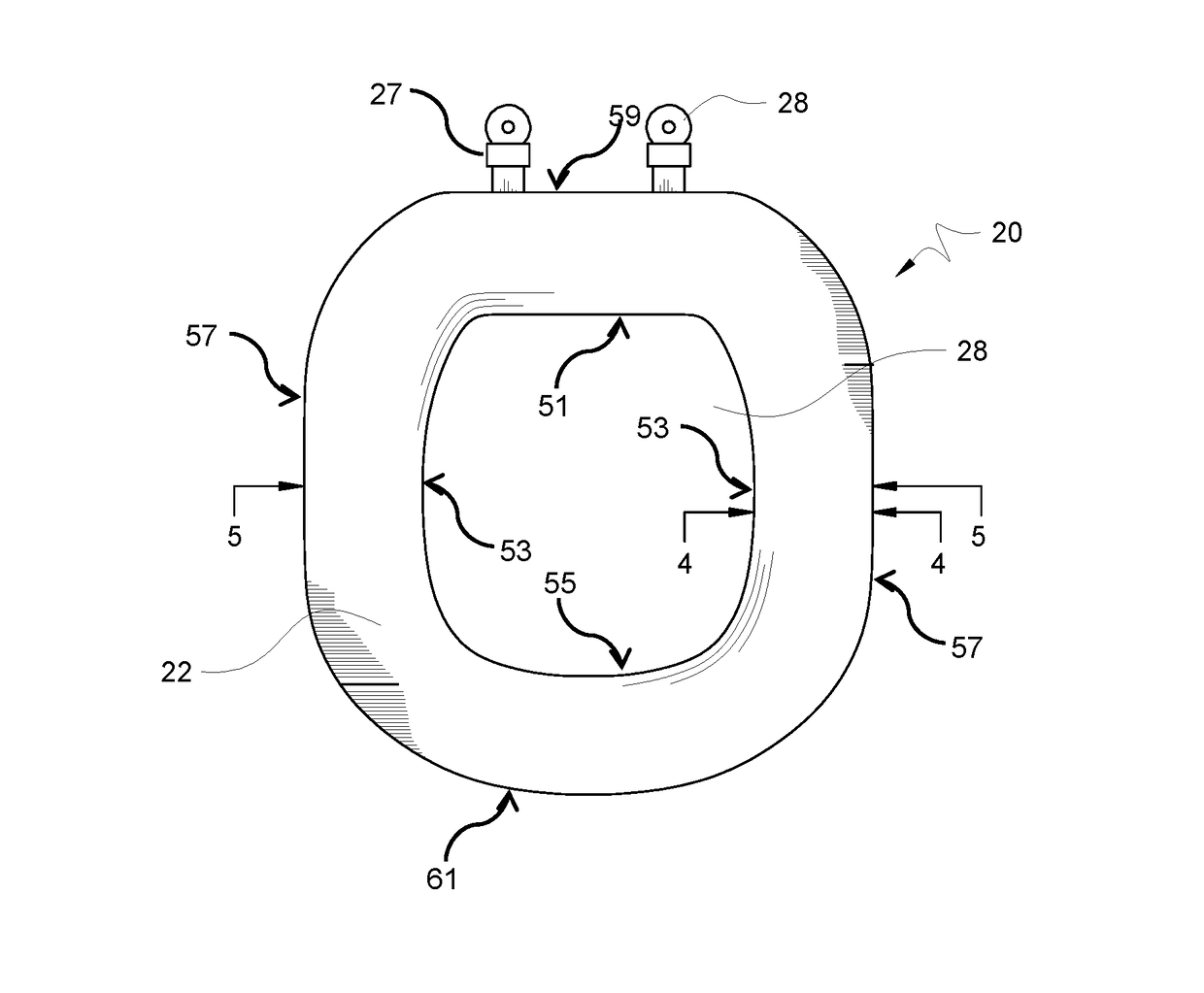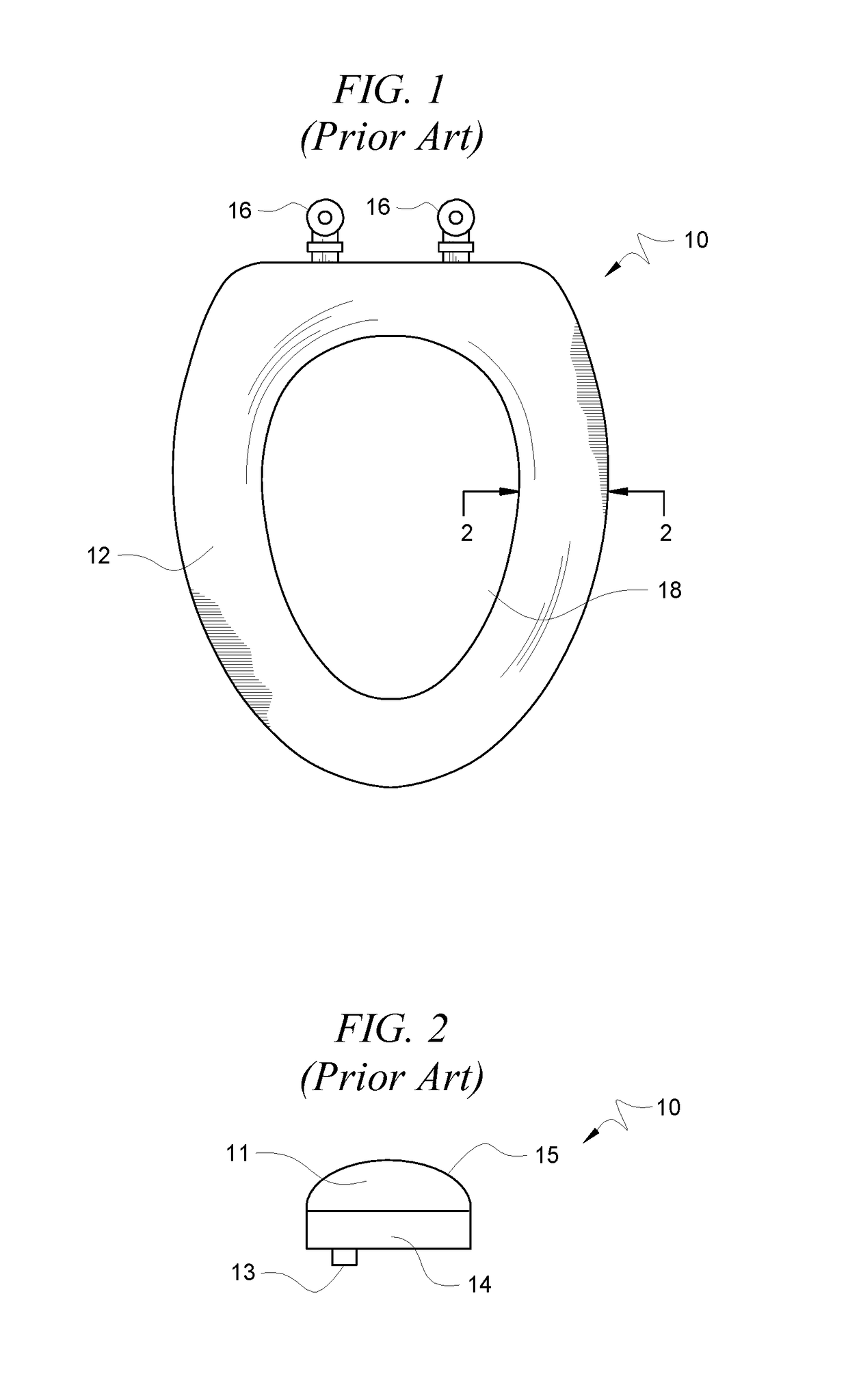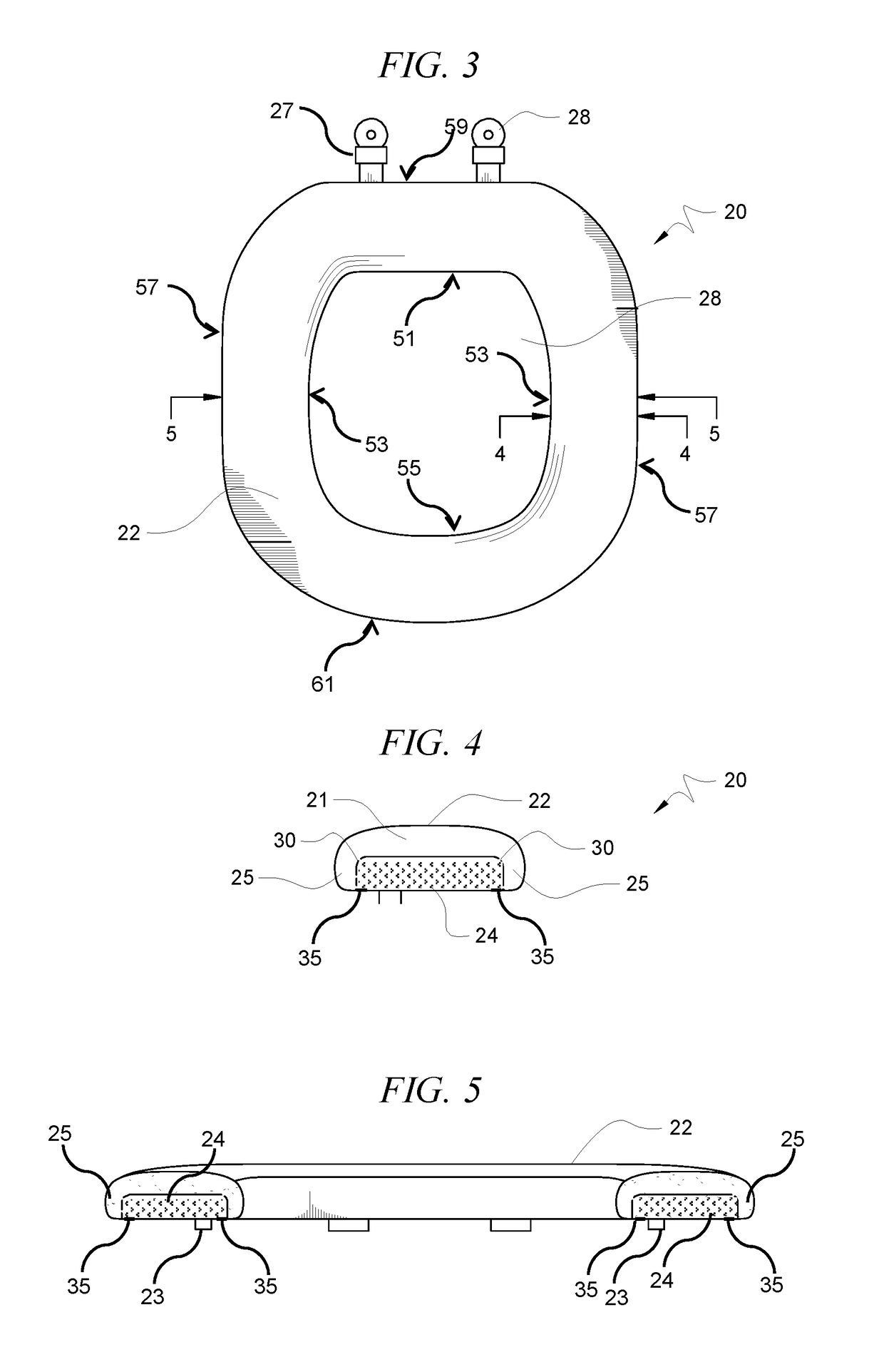Reduced Strain Toilet Seat
- Summary
- Abstract
- Description
- Claims
- Application Information
AI Technical Summary
Benefits of technology
Problems solved by technology
Method used
Image
Examples
Embodiment Construction
[0018]Reference will now be made in detail to the presently preferred embodiments of the invention, examples of which are illustrated in the accompanying drawings. Throughout the following detailed description, the same reference numerals refer to the same elements in all figures.
[0019]Referring to FIG. 1, a top view of a toilet seat of the prior art is shown. Many toilet seats of the prior art are shaped as the seat 10, though some are more oblong and some have a void towards the front (somewhat of an inverted “U”). Most seats of the prior art are hinged and fasten by a standard arrangement using two bolts (not shown) passing through the end fittings 16 of the hinges. Generally, toilet seats of the prior art have a centrally located aperture 18 and a seat area 12.
[0020]Referring to FIG. 2, a cross-sectional view along line 2-2 of a toilet seat of the prior art is shown. Although many toilet seats 10 of the prior art consist of a solid seat member, though some toilet seats 10 of the...
PUM
| Property | Measurement | Unit |
|---|---|---|
| Weight | aaaaa | aaaaa |
| Pressure | aaaaa | aaaaa |
| Elastomeric | aaaaa | aaaaa |
Abstract
Description
Claims
Application Information
 Login to View More
Login to View More - R&D
- Intellectual Property
- Life Sciences
- Materials
- Tech Scout
- Unparalleled Data Quality
- Higher Quality Content
- 60% Fewer Hallucinations
Browse by: Latest US Patents, China's latest patents, Technical Efficacy Thesaurus, Application Domain, Technology Topic, Popular Technical Reports.
© 2025 PatSnap. All rights reserved.Legal|Privacy policy|Modern Slavery Act Transparency Statement|Sitemap|About US| Contact US: help@patsnap.com



